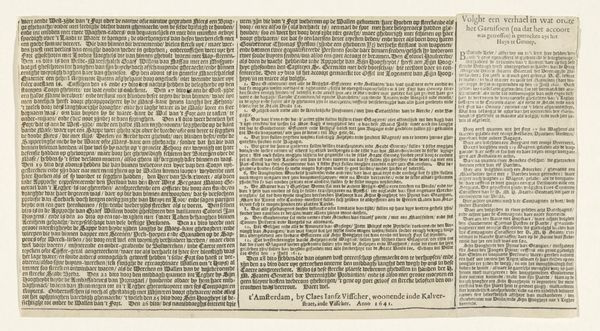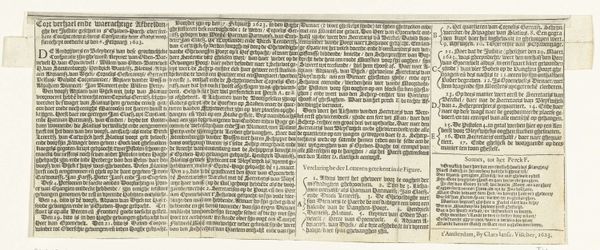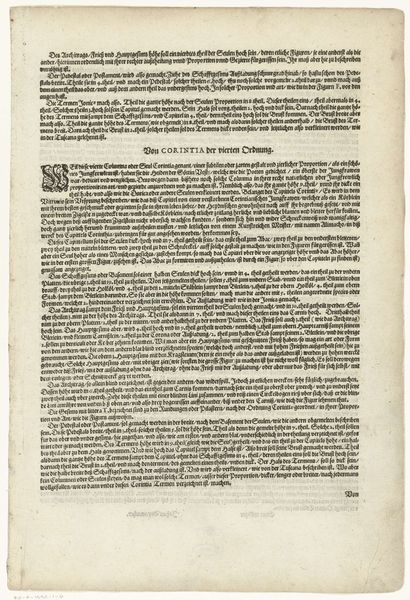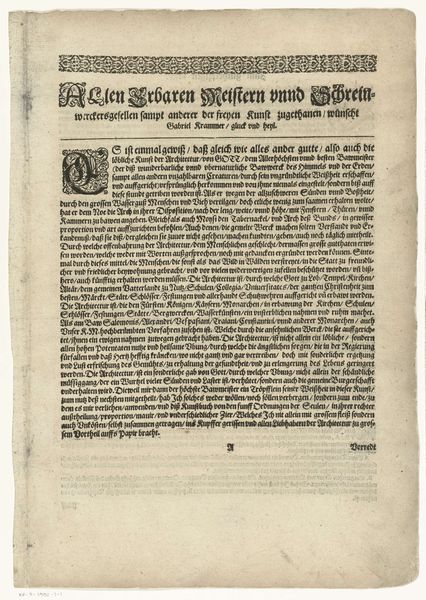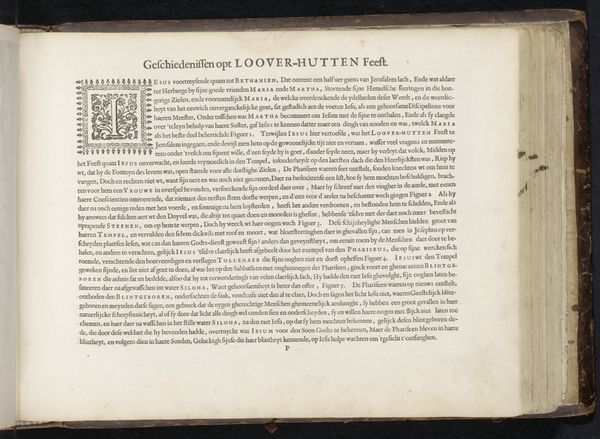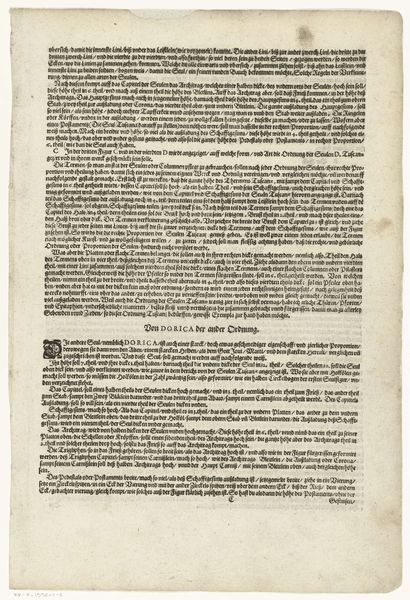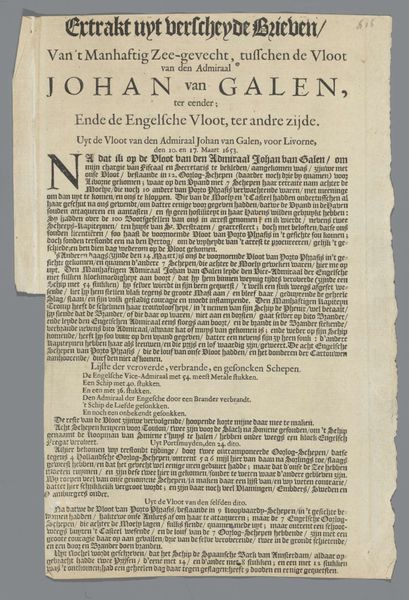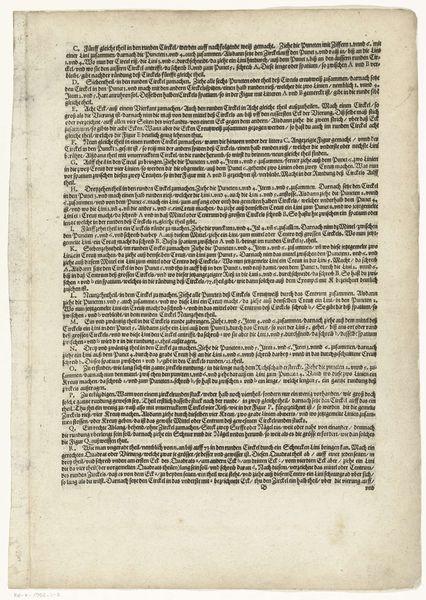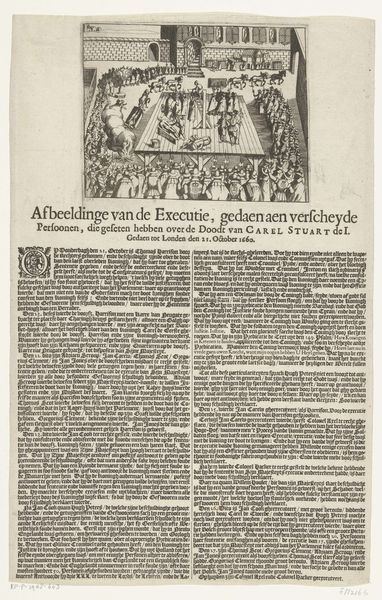
print, etching, textile, engraving
#
dutch-golden-age
# print
#
etching
#
textile
#
history-painting
#
engraving
Dimensions: height 370 mm, width 208 mm
Copyright: Rijks Museum: Open Domain
Curator: Looking at this tightly-packed text, one is immediately struck by the density of language, an almost impenetrable thicket of words. Editor: Indeed. And that intensity is rather fitting. Here, hanging on the wall of the Rijksmuseum, we have a print created by Rombout van den Hoeye in 1648. It’s the first page of the Treaty of Münster. Curator: Precisely. A momentous document printed using etching and engraving, capturing a pivotal moment in Dutch history. Beyond its function as a historical record, this treaty is laden with potent imagery. Editor: I notice that prominent "I" that begins a paragraph about midway down the page; how often does this image of an illuminated initial evoke the authority, almost the sacred quality, associated with formal agreements or historical documents? That stylized letter itself, even divorced from its textual context, conveys stability, foundations. Curator: Good observation! And that visual weight is crucial. It speaks volumes about how the Peace of Münster reshaped Dutch identity. Officially recognizing the Dutch Republic’s independence from Spain, it marked the end of the Eighty Years' War and the beginning of the Dutch Golden Age. The text itself, while dense, embodies a shift toward self-governance and international recognition. Editor: Do you think its dense appearance further reinforces its importance? Almost like it has a textual heft—signifying something heavy and significant? Curator: Absolutely. The act of formally enshrining this declaration on paper contributed to the aura and legitimacy of this relatively new republic. The layout—the conscious decisions surrounding the typeface and arrangement of these clauses and proclamations—all coalesce to telegraph seriousness and gravitas to those who see it. Editor: In looking at this now, it makes you wonder what other symbols, either blatant or obscure, lie interwoven inside these 17th-century letterforms, each one an intricate echo of this nation’s rise to independence. Curator: Indeed. By taking a closer look at an artifact such as this, one can understand not just a peace treaty, but how it reshaped a nation's symbolic identity on the global stage. Editor: A potent visual symbol indeed. The legacy and identity-defining visual record that lives on.
Comments
No comments
Be the first to comment and join the conversation on the ultimate creative platform.


